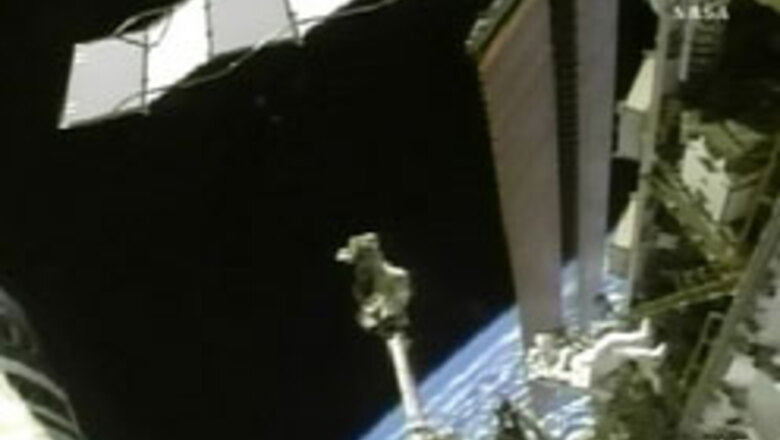
views
Houston: After five busy days in space and two successful spacewalks, astronauts aboard the space shuttle Discovery planned on taking things easy on Friday.
But with a solar array halfway retracted and NASA managers willing to try several creative potential fixes, the day may end up being busier than expected.
The solar panel is part of an interim power system the international space station was using.
One of the main goals of the Discovery mission was to rewire the station and hook a new set of panels onto the permanent electricity grid.
The panels rotate with the movement of the sun to maximize the amount of solar energy produced, but in order for the new panels to rotate, the old panel had to be retracted.
While it was folded far enough to give clearance to the new panels, the old one got stuck after retracting halfway. NASA had wanted it to retract fully.
The problem lies in a guidewire that is stuck in one of the eyelets, causing the array to billow.
In tests of the array on Earth, NASA saw the issue arise, but gravity helped fix it. That's not the case in space.
NASA will try helping it along by jiggling the array in hopes that will push the wire through the hole.
It plans to move a joint on the panel to shake it, and may also ask one of the astronauts to break a sweat using a bungee bar-like exercise device.
NASA officials recalled an incident where the space agency saw an array shaking and found the cause was astronaut Leroy Chiao working the device hard in his squats and lifts.
NASA may also try different methods of retracting the accordion-like 115-foot array using a remote control.
One of the final resorts would be a fourth spacewalk, where astronauts could manually help the array along.
If that were to happen during the Discovery mission, it would take place on Sunday or Monday.
US astronaut Robert Curbeam and Swedish astronaut Christer Fuglesang who have performed both of the spacewalks are likely take on the task.
It could also be performed later on by one of the space station residents.
However, lack of training, logistical challenges and the risk of electrical shock involved in such an undertaking makes it a less favorable option.
"I think we'll clear this with IVA steps," Mike Suffredini, NASA's space station program manager, said in a briefing late Thursday, using the technical name "intravehicular activity" for tasks that can be done from inside the spacecraft as opposed to a spacewalk.
"Now I'll tell you, there's about two thousand people in the control center and about three-quarters of them think I'm crazy," Suffredini joked.
On a more serious note, he said that because the halfway-retracted array is structurally sound, he can take the time to think about various solutions.
In its first two spacewalks, the Discovery crew installed a two-ton, $11-million addition to the space station and rewired half of the orbiting space lab.
A third spacewalk is scheduled for Saturday to rewire the other half.
Astronauts on the 12-day mission are due to return to Earth on Thursday.



















Comments
0 comment